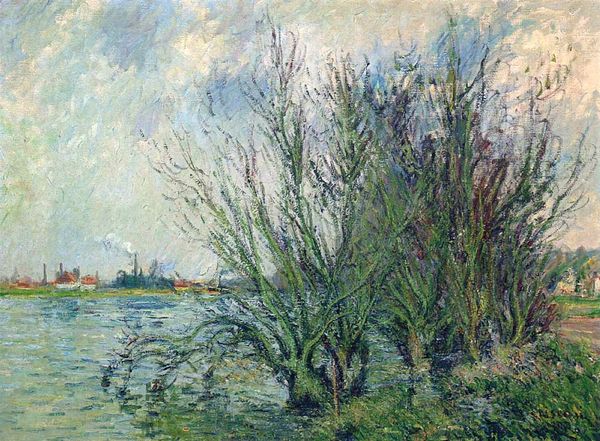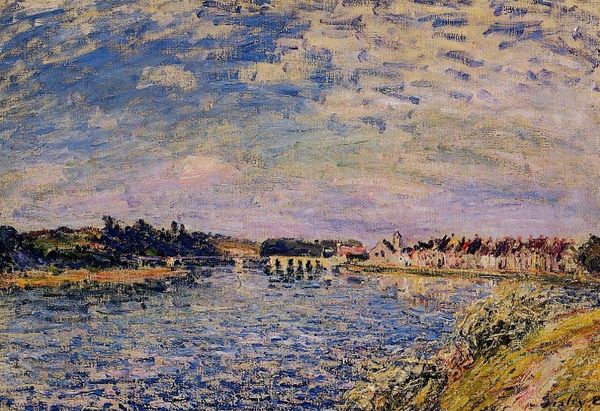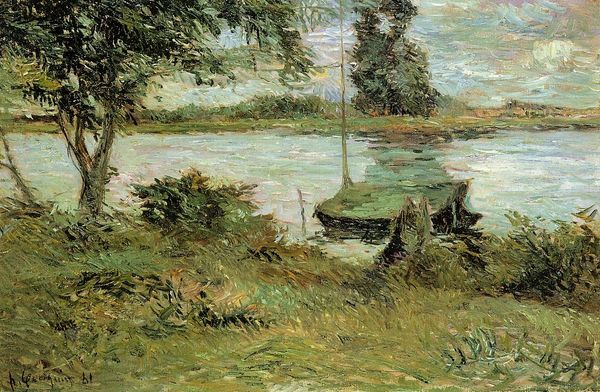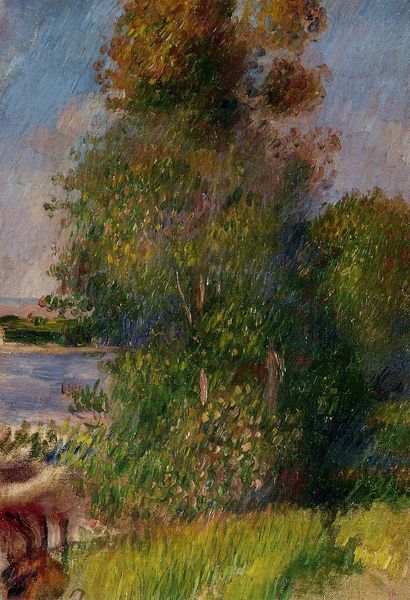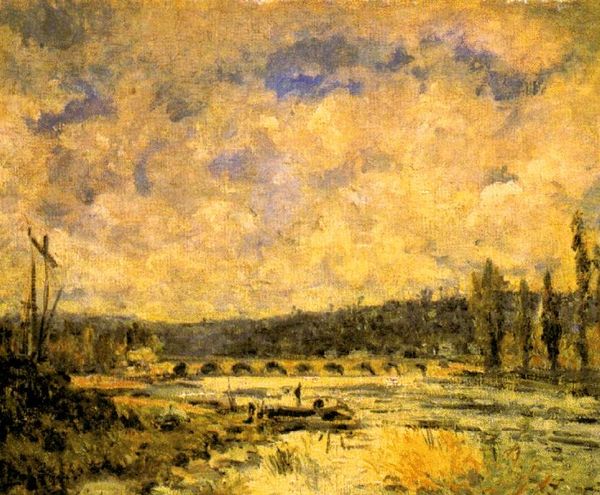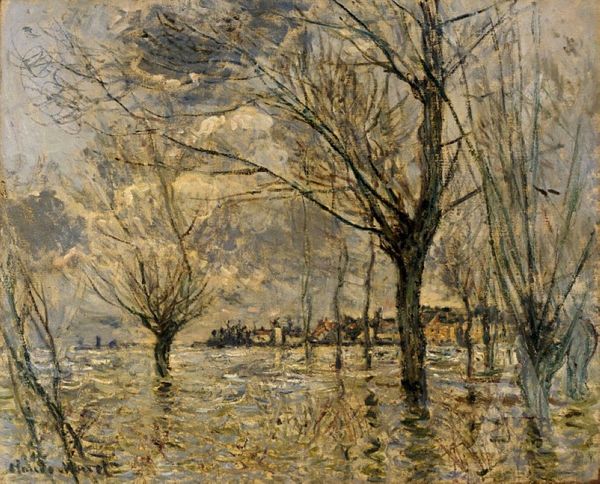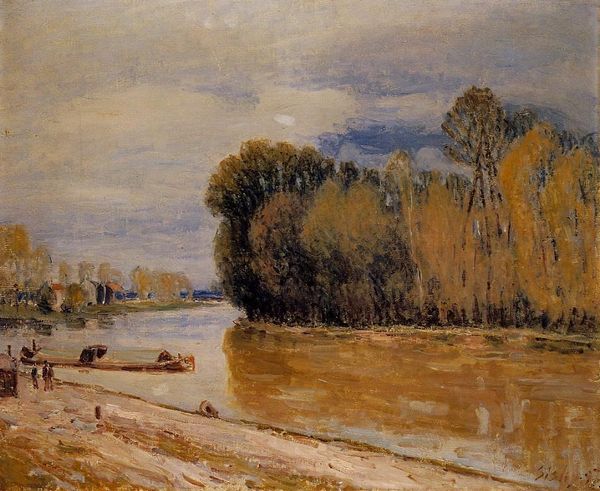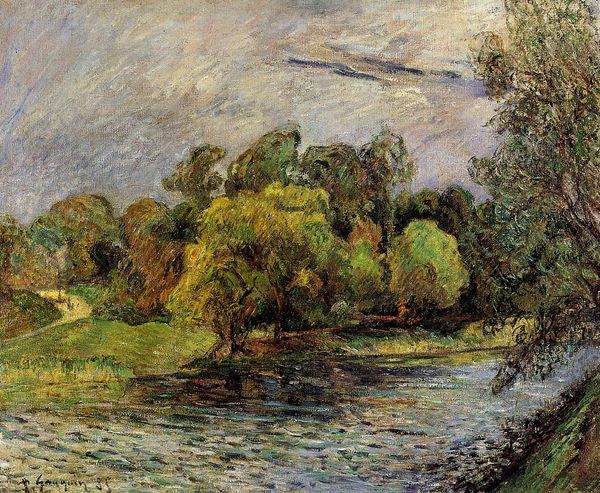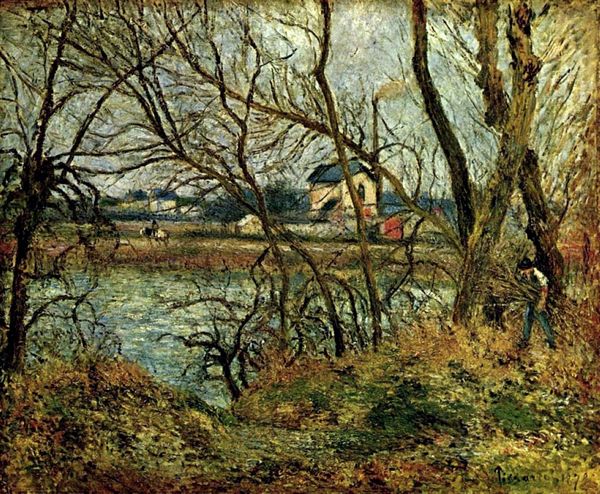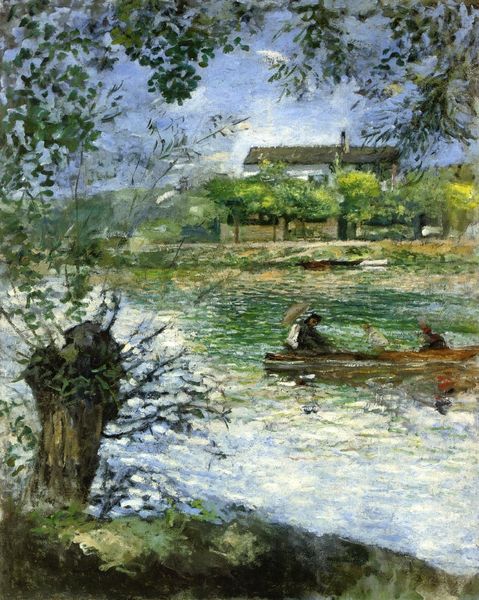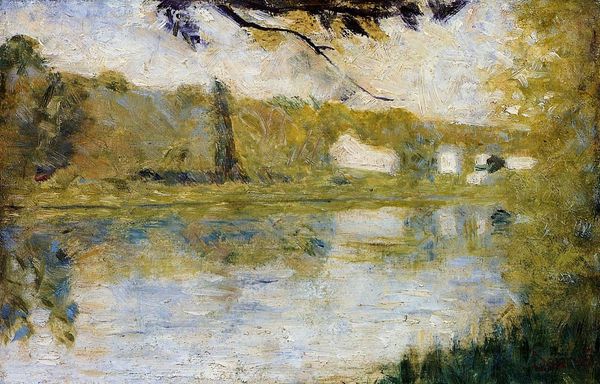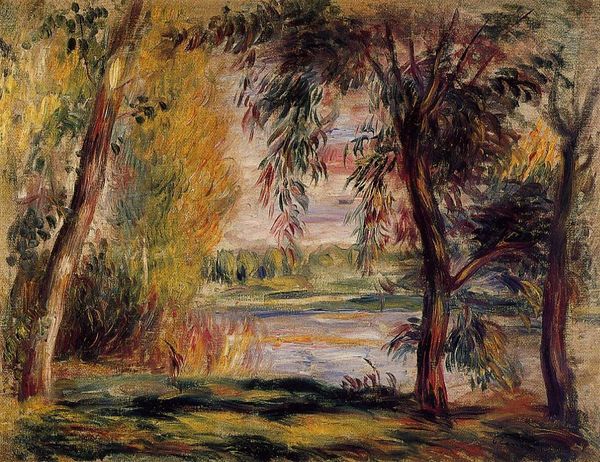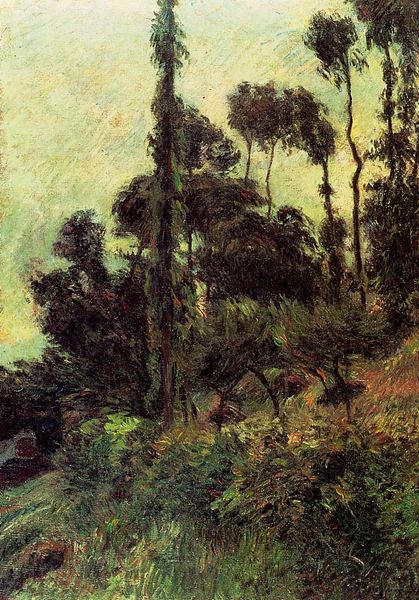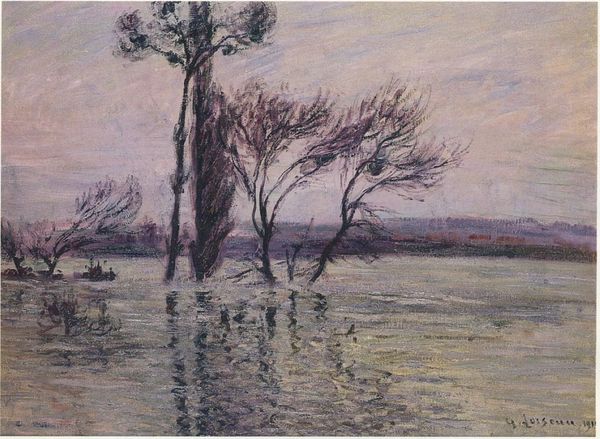
painting, oil-paint
#
tree
#
sky
#
painting
#
impressionist painting style
#
oil-paint
#
landscape
#
impressionist landscape
#
oil painting
#
natural-landscape
#
post-impressionism
Copyright: Public domain
Curator: Gauguin painted this, *Fire by the water*, in 1886, an oil-paint landscape currently housed in the Thyssen-Bornemisza Museum in Madrid. It's a captivating example of his move towards Post-Impressionism. Editor: It certainly is atmospheric. There’s something immediately striking about the composition, the way the dark silhouettes in the foreground contrast with the glowing water. The textural brushwork is particularly engaging. Curator: Indeed. This was a time of great social change in France, and the gathering around the fire feels imbued with a sense of community, perhaps of refuge or even rebellion against industrialization. Editor: From a formal perspective, the darkness of the figures emphasizes the painting's concern with light. The reflected yellows and oranges across the water are achieved through careful, short brushstrokes. The strong verticality of the central tree offers an important focal point. Curator: The Post-Impressionists were actively pushing back against the fleeting impressions of the Impressionists, interested instead in capturing more lasting, essential truths. Gauguin himself sought authenticity in the more rural, less corrupted parts of France. This scene suggests a world apart. Editor: The dark palette does subdue any celebratory reading, however, it is quite brooding, a kind of tension in the arrangement that captures that shift from Impressionism so directly. Curator: We also must remember this artwork and other naturalist depictions became highly controversial for their honest portrayal of social classes. Gauguin challenged traditional representations, placing the common person, as a vital force in French society. Editor: It offers a window into how artists were engaging with the changing social and aesthetic landscapes of their time. Curator: It certainly highlights the historical narrative intertwined in its brushstrokes. Editor: Indeed, there’s always so much more beneath the surface.
Comments
No comments
Be the first to comment and join the conversation on the ultimate creative platform.
